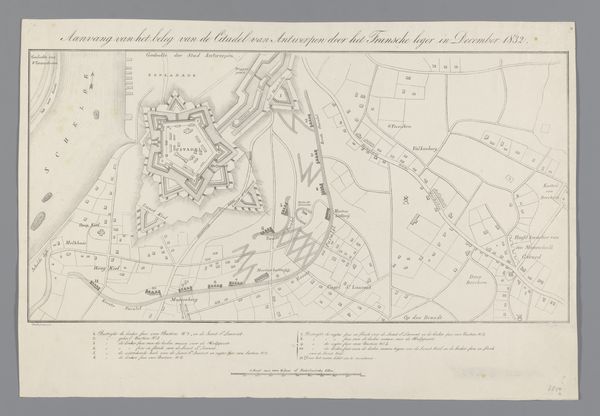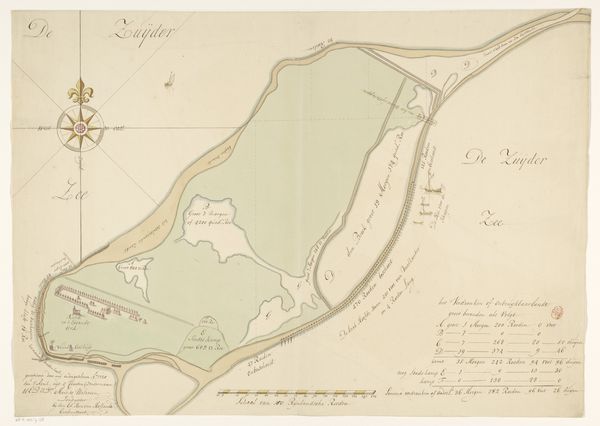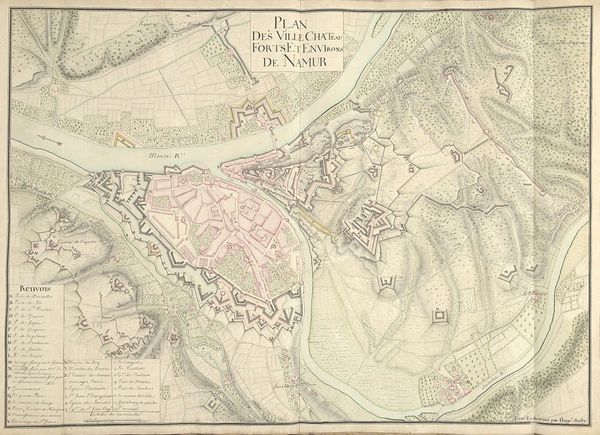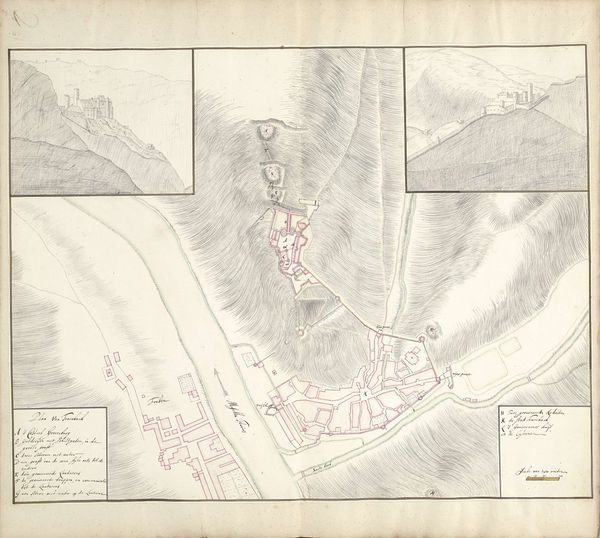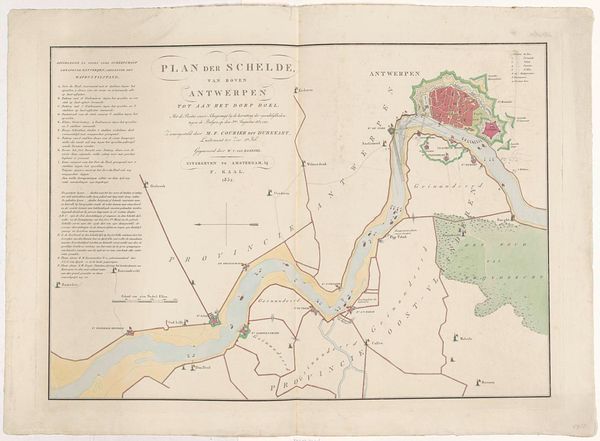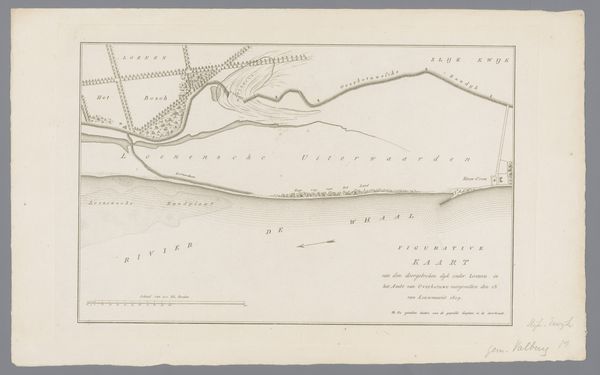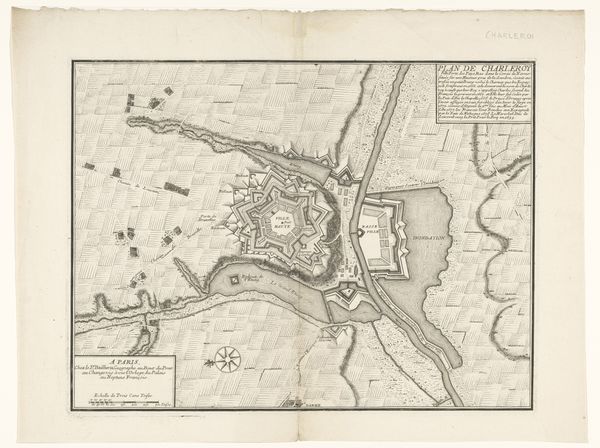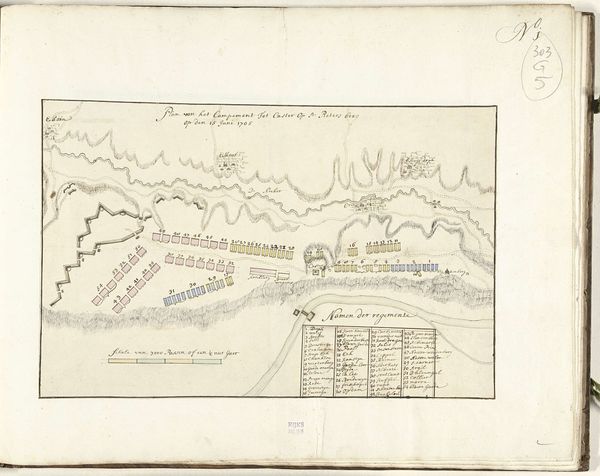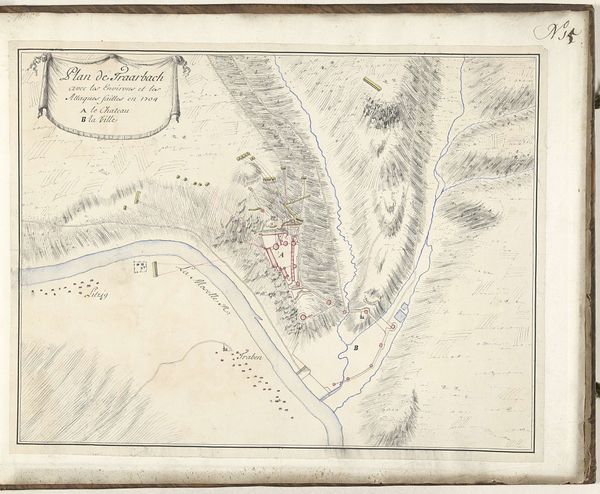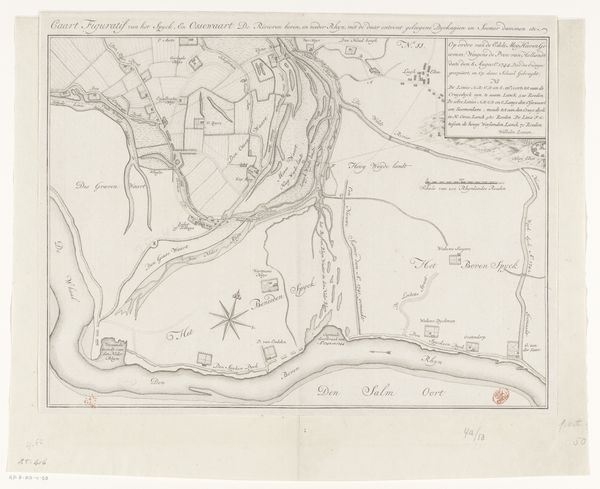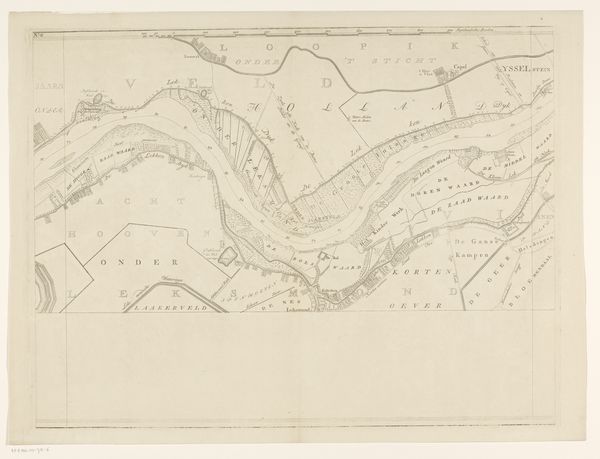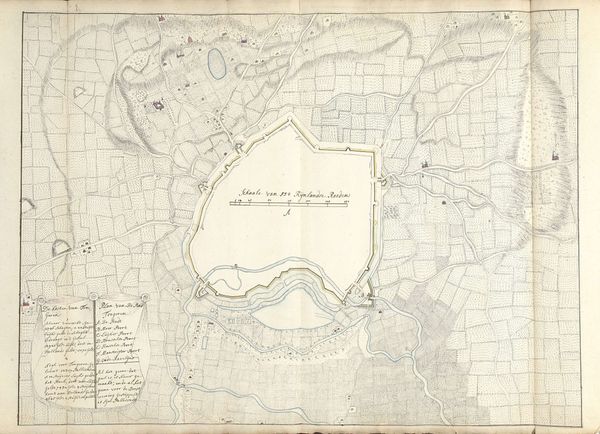
Aanvang van het beleg van de Citadel van Antwerpen door het Fransche leger in December 1832 1832 - 1833
0:00
0:00
anonymous
Rijksmuseum
drawing, lithograph, print, etching, paper, ink
#
drawing
#
lithograph
# print
#
etching
#
paper
#
ink
#
geometric
#
romanticism
#
cityscape
#
history-painting
#
realism
Dimensions: height 370 mm, width 588 mm
Copyright: Rijks Museum: Open Domain
Curator: This print from 1832 to 1833, titled "Aanvang van het beleg van de Citadel van Antwerpen door het Fransche leger in December 1832," captures the commencement of the siege of the Citadel of Antwerp by the French army. It's currently housed at the Rijksmuseum. Editor: It has a strangely calming effect for something depicting the beginning of a siege, wouldn't you agree? The pale inks, etching, and precise lithography almost abstract the impending conflict into something like an ordered garden. Curator: In thinking about its time of creation, such order was often valued and prioritized, specifically, how prints like these served to frame and disseminate narratives favorable to emerging powers. Editor: Right, but let’s focus on how this map would have functioned. The material itself speaks volumes. Look at the intricacy of the etched lines. It clearly denotes territories, planned routes, and likely troop movements. Who was this information intended for, and what labor was involved in producing copies? Curator: Well, the subject matter speaks to a significant moment of geopolitical shift and renegotiation of national identities within Europe. Consider this piece in relation to the political upheaval of the 19th century, specifically the Belgian Revolution of 1830, which led to Belgium’s separation from the Netherlands. Editor: Absolutely. The print uses line and perspective to exert a kind of cartographic authority over territory, but consider the paper, the inks... they had material and strategic value as commodities. The act of creating this image, therefore, isn’t just about memorializing history but shaping a certain, most likely, pro-French understanding of the siege for consumption by a certain social class. Curator: It shows how representation can solidify power, turning conflict into an aesthetic product—but the key takeaway for me is to use history and intersectionality to create multiple narratives of an important political time for European countries like France, Belgium, and the Netherlands. Editor: For me, the material transformation involved here makes you ponder how war turns everything else into just more things. From gunpowder production to the uniforms worn, it transforms not just borders but the physical makeup of societies.
Comments
No comments
Be the first to comment and join the conversation on the ultimate creative platform.
